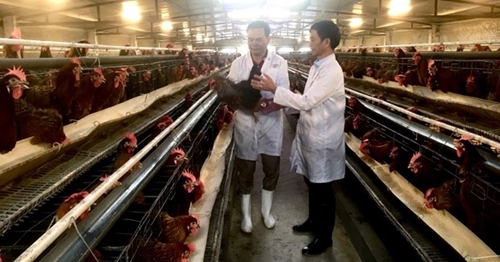According to statistics, the total volume of farming by-products nationwide exceeded 156.8 million tons in 2020. Their proportion used in the circular economy (for livestock feed, composting, cooking, and other purposes) accounted for 45%, while the rest was directly disposed into the environment, resulting in significant waste.
    |
 |
|
Inside a chicken farm in Dong Anh district, Hanoi |
Nguyen Xuan Duong, Chairman of the Animal Husbandry Association of Vietnam (AHAV), said he believes that developing a sustainable and environmentally-friendly agriculture through a circular economy model in production is an inevitable trend. The transition to a circular economy contributes to the development of the agricultural sector toward enhanced value added and sustainability, serving the realization of economic and social goals and coping with climate change.
Nguyen Quynh Hoa from the Department of Livestock Production said that livestock production must be integrated with crop cultivation and other sectors to form a circular economic chain. She also mentioned the need to utilize the potential of agricultural by-products and livestock waste to develop sustainable livestock farming, reduce greenhouse gas emissions, and protect the environment.
Regarding the development of organic products, Ha Phuc Mich, Chairman of the Vietnam Organic Agriculture Association, pointed out that domestic consumers still lack awareness and understanding of organic farming and products. Consequently, there is no existing market for consumption on the spot, and there is limited encouragement for producers to convert from conventional to organic agriculture.
Participating experts expressed their belief that transitioning from a traditional economy to a circular economy requires system-wide changes, in which the roles of relevant parties, including the state and businesses, are of vital importance. Enterprises and cooperatives have embarked on establishing networks and sharing experiences in implementing circular economy models in agriculture, with technical support and connections coming from research institutes, schools, and technology transfer centers.
Source: VNa